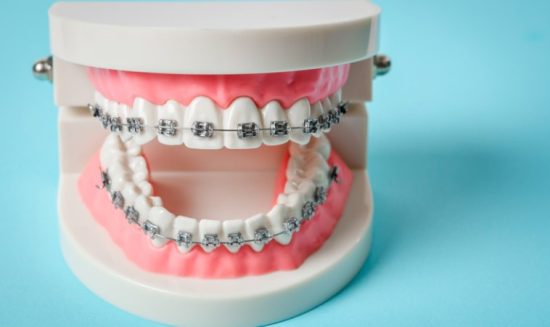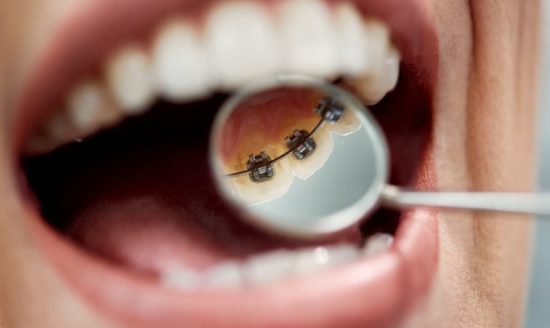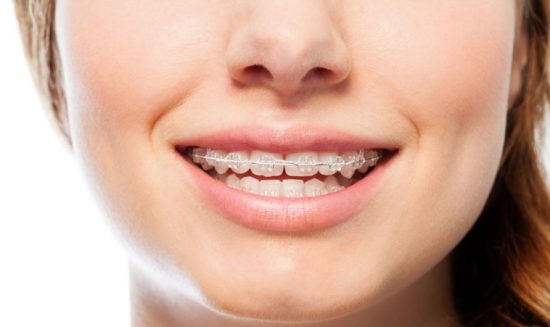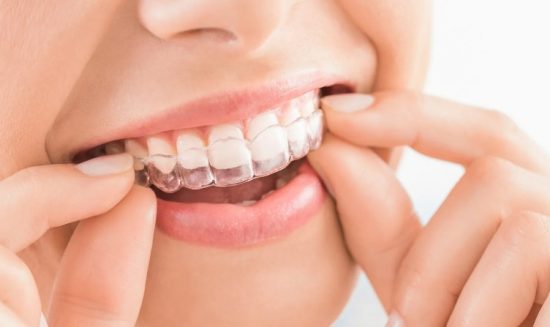Are you considering getting dental braces in Ontario but unsure about the cost? While having a beautiful, straight smile is priceless, it’s understandable to be concerned about the expenses associated with orthodontic treatment. Fortunately, various braces are available to suit different budgets and needs. In this blog post, we’ll explore the different types of dental braces and answer your burning question: How much are braces in Ontario?
So sit tight and get ready to learn everything you need to know before taking on this exciting adventure toward a healthier smile!
What Are Dental Braces?

Dental braces are orthodontic devices that are used to correct misaligned teeth and jaws. They are made up of brackets, wires, and bands that cooperate to force the teeth into their right locations over time gently.
Braces can be made from different materials, such as metal, ceramic or clear plastic. Metal braces are the most common type and are known for their durability and effectiveness in correcting dental issues. Ceramic braces blend in with the natural colour of your teeth, making them less noticeable than metal ones.
Orthodontists use various techniques when installing braces, including wire tightening or changing rubber bands. The type of brace chosen will depend on individual needs such as age, severity of the condition being treated, personal preferences and budget.
It’s important to note that getting braces is not a quick fix – it requires commitment and patience because treatment times vary based on each person’s unique situation. However, if you’re looking for a long-term solution to achieve a healthier smile, dental braces may just be what you need!
How Do Dental Braces Work?
Dental braces work by applying constant pressure to the teeth, which gradually moves them into their proper position. This process is made possible through the use of brackets, wires, and rubber bands that are attached to the teeth.
The brackets are usually made of metal or ceramic materials and are bonded to each tooth with a special adhesive. After that, the archwire is inserted into every bracket and tightened as necessary to gently press the teeth.
Over time, this consistent application of force causes bone tissue in the jaw to break down on one side and grow on the other. As a result, your teeth slowly shift toward their desired location.
It’s important for patients receiving orthodontic treatment to follow all instructions provided by the dentist in Ontario or any Canadian orthodontist. This includes attending regular appointments for adjustments, avoiding certain foods that could damage braces (such as hard candies), and practicing good oral hygiene habits throughout treatment.
While it may take several months or even years for dental braces to fully correct misaligned teeth, many people find that this investment in their smile is well worth it in the end.
What Are the Different Types of Dental Braces?
Dental braces can provide a long-term solution to dental problems that cannot be treated with other methods. They work by straightening teeth and correcting bite issues which can lead to better oral health as well as improved self-esteem and confidence.
Different types of dental braces are available such as traditional metal brackets or ceramic brackets that blend in more naturally with your teeth. Lingual or invisible braces fit behind your teeth, making them virtually undetectable, but they tend to be more expensive than other options.
Metal Braces

Metal braces are the traditional and most common method of orthodontic treatment. They consist of metal brackets that are attached to each tooth with a special adhesive. A thin wire then connects the brackets, tightened over time to gradually move the teeth into their desired positions.
One advantage of metal braces is their durability. They can withstand more pressure than other types of braces, making them ideal for complex cases where significant movement is needed. Additionally, they require fewer visits to the orthodontist for adjustments since they don’t need frequent replacement like some other options.
However, one downside of metal braces is their visibility. As a result, many people feel self-conscious about wearing them as they can be quite noticeable in the mouth. This has led to the development of newer, more discreet options such as ceramic or lingual braces.
If you’re looking for an effective and reliable way to straighten your teeth and improve your bite, metal braces may be a good option for you – especially if you have severe dental issues that require strong support during treatment.
Lingual Braces

Lingual braces are a type of dental brace that is attached to the back of your teeth. They are also known as “incognito” or “hidden” braces because they are not visible from the front. This makes them ideal for people who want to straighten their teeth without anyone noticing.
The process of getting lingual braces involves taking detailed impressions of your teeth, which are used to create custom-made brackets and wires that fit on the back of each tooth. Because they are customized, lingual braces offer high precision and control during treatment.
One advantage of lingual braces is that they can be used to treat virtually any orthodontic problem, including complex cases involving severe crowding or misalignment. They may take longer than traditional metal braces to achieve results, but many patients find them more comfortable and aesthetically pleasing.
However, there are some drawbacks associated with lingual braces. They can be more difficult to clean and maintain than other types of braces since they cannot be seen easily in the mirror while brushing or flossing. Additionally, speech patterns may take some time to adjust with these appliances initially placed on teeth at the backside.
Ultimately, whether you choose lingual or another type depends on several factors, such as cost and personal preference, alongside your dentist’s opinion regarding what will work best for you individually!
Ceramic Braces

Ceramic braces are a type of orthodontic treatment that is similar to traditional metal braces. However, instead of metal brackets and wires, ceramic braces use clear or tooth-coloured materials that blend in with the teeth.
One of the advantages of ceramic braces is their aesthetic appeal compared to metal braces. They are less noticeable and provide a more natural look, making them popular among adults who may feel self-conscious about wearing traditional metal braces.
Another advantage of ceramic braces is their durability. The material used for these types of braces is strong enough to withstand typical daily wear and tear without breaking easily.
However, there are some drawbacks associated with ceramic braces as well. They tend to be more expensive than traditional metal braces due to the costlier material used for manufacturing them. Also, they require extra care when cleaning because they can stain if not taken care of properly.
While ceramic braces offer an esthetically pleasing alternative to traditional metal brackets and wires, it’s important to consider all your options before making a decision on orthodontic treatment based solely on appearance.
Invisalign

Invisalign is a type of dental braces that has become increasingly popular. Invisalign aligners are comprised of clear plastic and, in contrast to conventional metal braces, are practically undetectable while worn. They work by applying gentle pressure to the teeth, gradually moving them into the desired position.
One of the biggest advantages of Invisalign is its convenience. Patients can remove them for eating and brushing their teeth, making maintaining good oral hygiene during treatment easier. Additionally, since they are made from smooth plastic instead of metal brackets and wires, patients experience less discomfort during treatment.
Another advantage is that Invisalign typically requires fewer office visits than traditional braces. The aligners need to be changed every two weeks, but most appointments only involve checking progress and providing new sets of aligners.
While there may be some cases where traditional braces are still necessary for more severe orthodontic issues, many patients find that Invisalign offers a discrete and convenient way to achieve straighter teeth without the hassle or discomfort associated with traditional braces.
Self Ligating Braces

A self-litigating brace is a dental brace that uses clips instead of elastic bands to hold the archwire in place. This allows for more efficient tooth movement and can shorten treatment time compared to traditional braces.
The clips on self-ligating braces reduce friction, which means fewer adjustments may be needed throughout treatment. They also make it easier to maintain good oral hygiene because no elastic bands can trap food particles or plaque.
One advantage of self-ligating braces is that they come in both metal and ceramic options, so patients have a choice based on their aesthetic preferences.
While self-ligating braces may cost slightly more than traditional braces, they can save money in the long run by requiring fewer appointments and potentially shortening treatment time.
Not all patients are candidates for self-ligating braces, and an orthodontist should evaluate each case before deciding which type of brace to use.
How Much Are Braces in Ontario?
When it comes to dental braces, the cost can vary depending on a number of factors. The average cost for metal braces ranges from $3,000 to $5,500 in Ontario. However, this can change based on a variety of factors, such as location and type of treatment.
Lingual braces tend to be more expensive due to their customized nature and increased complexity in the application. Ontario’s average range for lingual braces falls between $8,000-$10,000.
Ceramic braces are another alternative that tends to have higher costs than traditional metal ones due to the materials used. They usually fall within the price range of $5000 to $6000.
Invisalign is another popular option that has gained traction over recent years but also tends to be one of the pricier options averaging around $3,500-$7,500.
It’s important to note that these prices are all without factoring in insurance coverage or government assistance programs such as Healthy Smiles Ontario, which provides free dental care for children under 18 who qualify based on income requirements.
Conclusion
As we come to the end of this article, it’s important to note that the cost of braces in Ontario can vary based on a number of factors. It ultimately depends on the type of braces you choose and your individual needs and preferences.
One thing is for sure: getting braces is an investment in your dental health and overall well-being. Straighter teeth not only improve your appearance but can also prevent future dental problems.
When considering getting braces, it’s important to research different options and consult with orthodontic professionals who can provide personalized recommendations. With advances in technology, more braces are available than ever – from traditional metal brackets to clear aligners like Invisalign.
Ultimately, the decision to get braces is one that should be made with careful consideration. While cost may be a factor, remember that investing in your oral health will pay off in the long run.
FAQ – How Much Are Braces in Ontario?

How much are braces in Ontario without insurance?
If you are considering getting braces in Ontario, one of the important things to consider is the cost. The cost of dental braces can vary depending on numerous factors. One primary factor that affects the price is whether or not you have insurance coverage.
Without insurance, the average cost for traditional metal braces can range from $3,000 to $7,000 for a full treatment plan. However, this does not include any additional expenses such as X-rays, retainers or other follow-up appointments.
How to get free braces in Ontario?
Getting braces can be a significant investment; it may seem out of reach financially for some families. However, there are programs available in Ontario that offer free or low-cost orthodontic treatment to eligible individuals.
One option is the Ontario Disability Support Program (ODSP), which provides financial assistance for those with disabilities who require orthodontic treatment. Additionally, the Children In Need of Treatment (CINOT) program offers free dental care, including braces, to children from low-income families who meet certain criteria.
Another option is to look into clinical trials or research studies that may offer free or reduced-cost orthodontic treatment in exchange for participation in the study. It’s essential to do your research and ensure that any clinical trial you participate in is legitimate and safe.
Some charitable organizations may offer assistance with orthodontic costs. It’s worth reaching out to local charities and community organizations to see if they have any resources available.
While getting free braces in Ontario requires meeting specific eligibility requirements or finding unique opportunities like clinical trials or charity events, it remains possible through various options offered by both government bodies as well as private institutions.
Are braces covered by dental insurance Ontario?
Many dental insurance plans in Ontario cover braces, but it’s important to check with your specific plan to see what is covered. Some plans may only provide coverage for certain types of braces or may have a limit on how much they will cover.
If your dental insurance covers orthodontic treatment, you will likely need to pay some portion of the cost. This could be in the form of a deductible or co-pay. It’s important to understand exactly what your out-of-pocket costs will be before starting any sort of orthodontic treatment.
If you don’t have dental insurance covering braces, other options are available for financing treatment. Many orthodontists offer payment plans that allow you to spread out the cost over time.
In addition, there are also programs available through government agencies and non-profit organizations that can help with the cost of braces for those who meet certain eligibility requirements. It’s worth doing some research and exploring all available options before making a decision about whether or not to pursue orthodontic treatment.
How much do braces cost in Canada with insurance?
If you have dental insurance, it’s knowing what kind of coverage is available for braces is important. The cost of braces in Canada with insurance can vary widely depending on your plan type and how much coverage it provides.
Some dental plans cover a portion or all of the cost for braces, while others may only cover a certain amount per year. It’s essential to review your policy carefully before making any decisions about getting braces so that you understand exactly what kind of financial support is available.
Once you’ve determined how much your insurance will cover, it’s also important to consider other factors that can impact the overall cost of treatment. For example, some braces are more expensive than others, and additional costs may be associated with regular adjustments and follow-up appointments.
Ultimately, the best way to determine how much your specific orthodontic treatment will cost is by consulting with an experienced orthodontist who can provide personalized recommendations based on your unique needs and circumstances.
Does OHIP pay for braces?
Dental braces are a great way to correct teeth misalignment and improve oral health. The cost of getting braces in Ontario can vary depending on the type of braces you choose, your location, and other factors such as insurance coverage.
It is important to consult with an orthodontist to determine which type of braces would be most suitable for you and discuss payment options available. Many orthodontic clinics offer financing plans that can help make the cost more manageable.
As for whether OHIP pays for braces in Ontario, unfortunately, it does not cover the cost of orthodontic treatment unless there is a medical need or emergency situation. However, some private insurance companies may provide coverage for dental braces.
Investing in dental braces can have long-term benefits for your oral health and confidence. You can achieve a healthy, lasting lifetime smile with proper care and maintenance during treatment.










